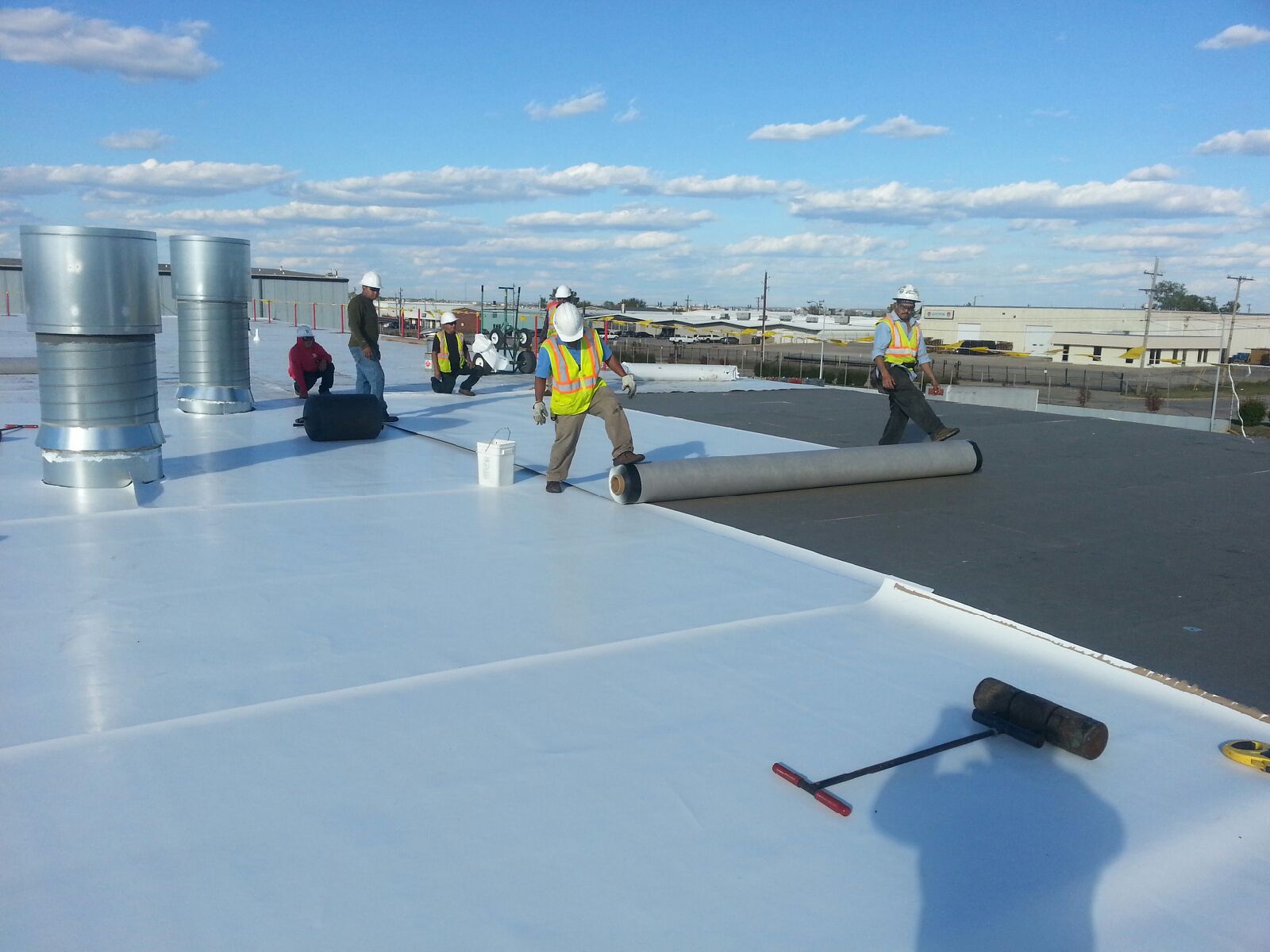Thermoplastic Polyolefin is a single-ply roofing membrane that is one of the fastest-growing commercial roofing systems on the market. TPO roofing systems are a single layer of synthetics and reinforcing scrim used to cover flat roofs.
TPO membranes are manufactured in sheets 10, 12, or 20 feet wide. These sheets are then rolled up and taken to the commercial facility.
TPO has gained industry acceptance with its naturally reflective surface to reflect UV rays. The National Roofing Contractors Association (NRCA) reported that TPO takes up about 40% of the commercial roofing market share.

